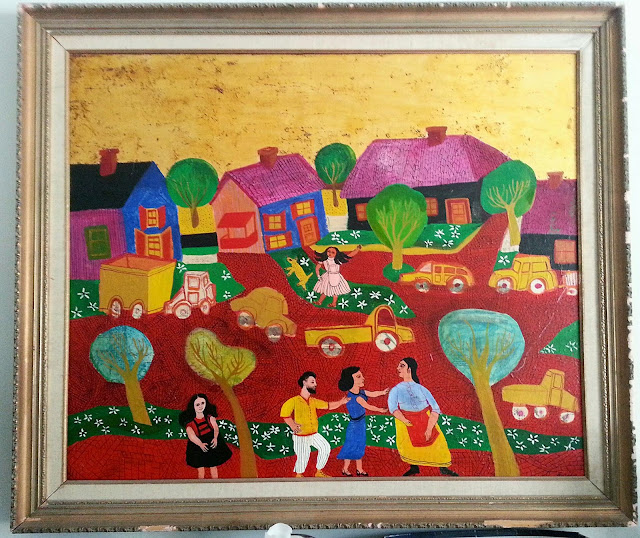Baila Feldman loved to paint images of everyday life. There are canvasses of people playing cards, walking in the park, sitting in chairs, going to market, and - as seen here - simply walking on the street. In these three late style naive primitivism examples (late 1960s-early 1970s), perspective is as a child would render it. The cars are childish as well. People are simple and joyous and the colors are radiant; jewel-like; over the top. The buildings, hills, trees, and landscapes themselves seem to breathe and move. In the example above, the red street is laced with a multitude of tiny lines indicating brickwork. The bricks are all over the place: the grids obey no order whatsoever. People and animals are in the foreground.
In the San Francisco scene below, it's the San Francisco hilly houses which are the population. There is only a single person in view.
In the scene of Los Angeles titled "Wilshire Boulevard" - courtesy of Jennifer Eastman Hansen, of Palos Heights, Illinois) - there is almost formal perspective. But not quite. The emphasis on joyous people is a constant.
 |
| San Franciso |
 |
| Wilshire Boulevard - photo courtesy of Jennifer Eastman Hansen |










